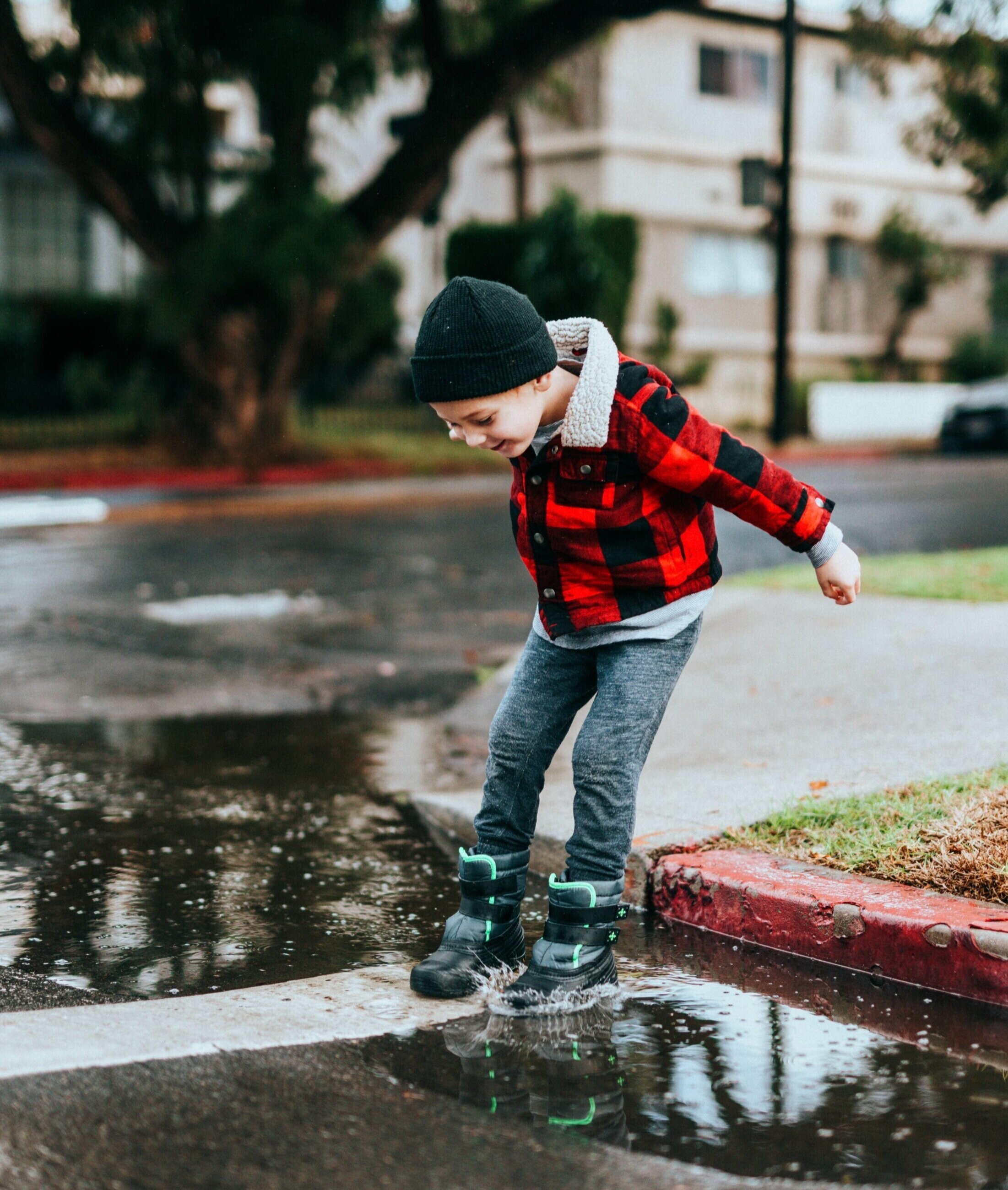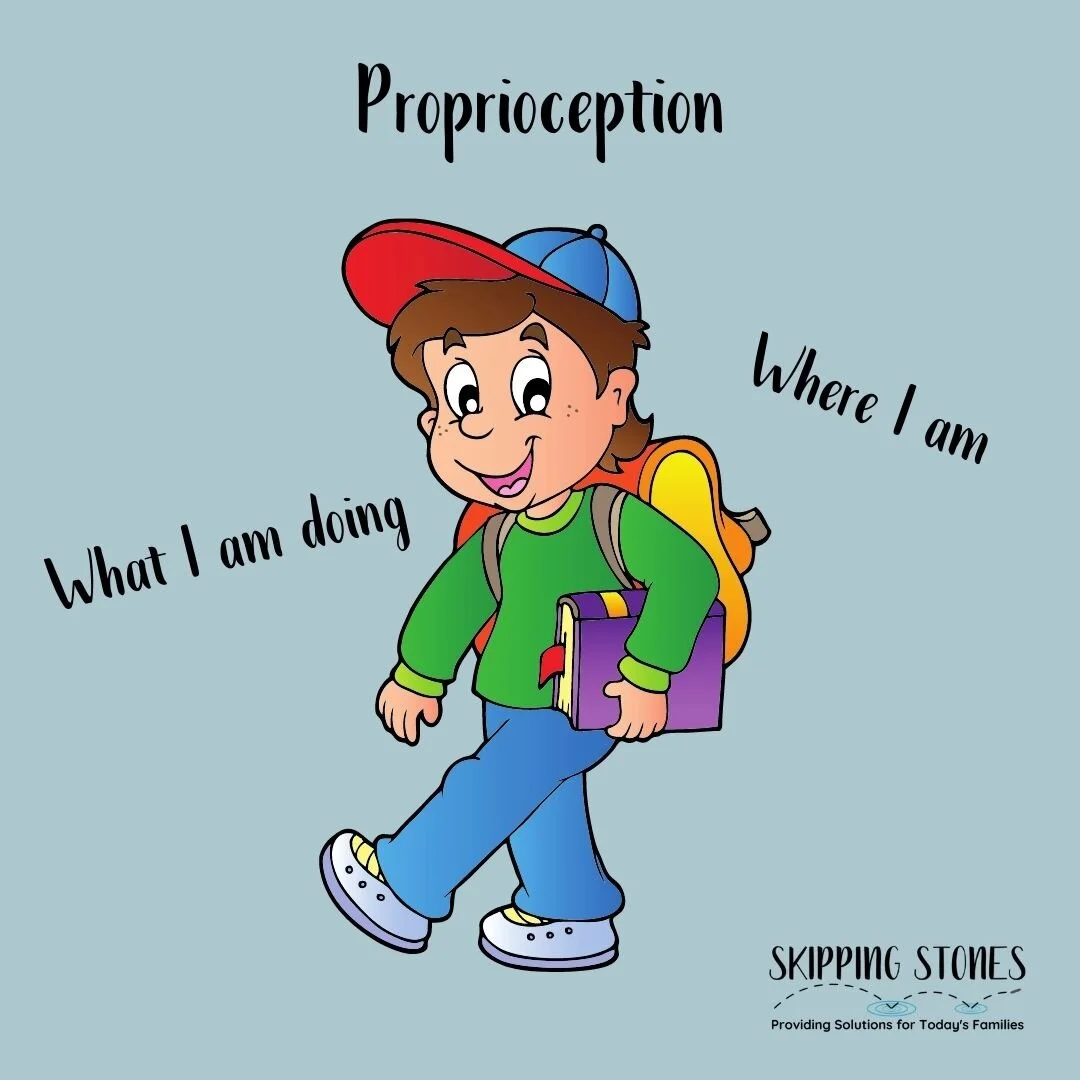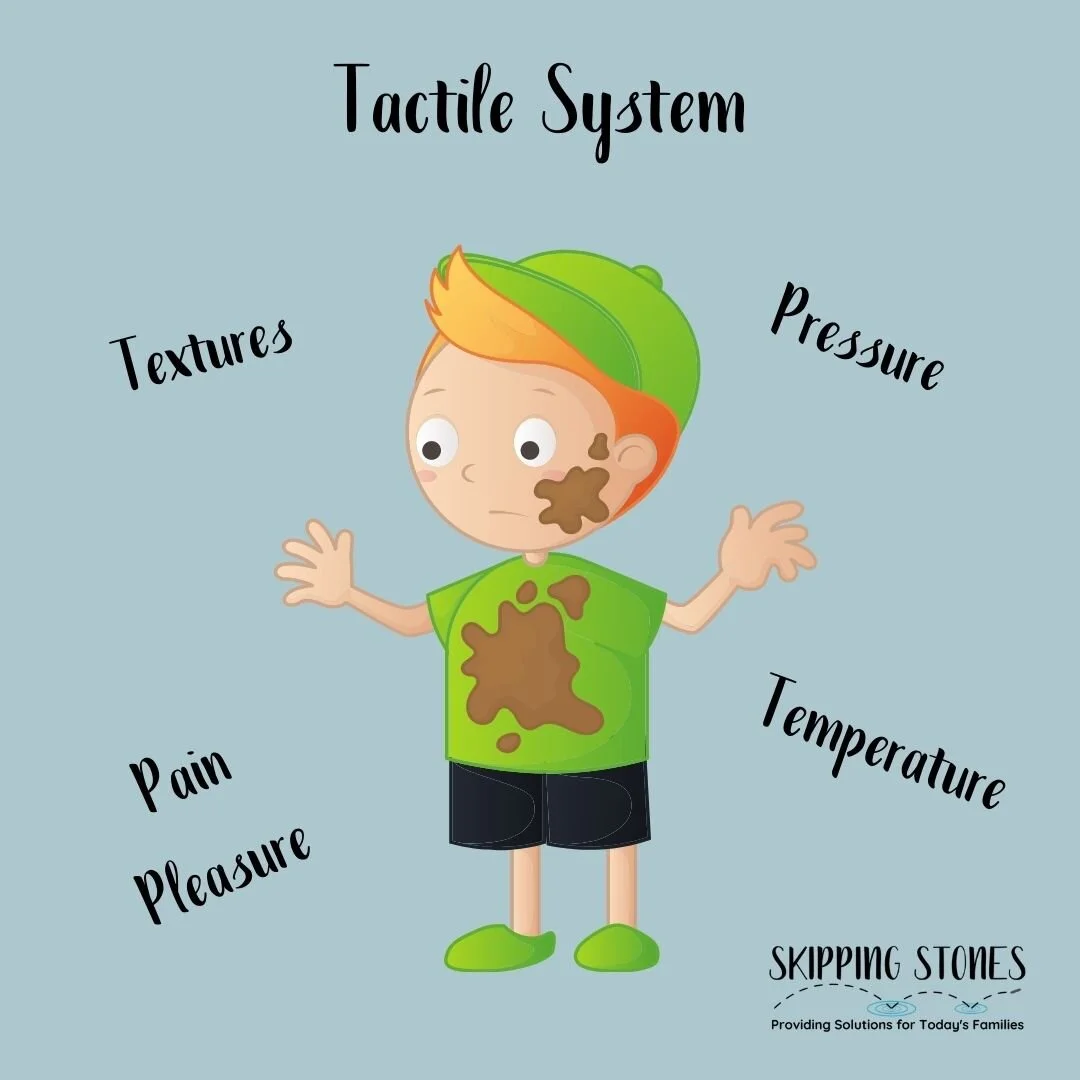Understanding and Fostering Development of the Sensory Systems
It is through the senses that a person understands who they are.
It is through the senses that a person experiences the world around them.
It is through the senses that a person can engage in relationship.
It goes without saying, then, that optimizing the sensory system is crucial for functioning well in everyday life. When a baby is born some senses are highly developed, such as hearing, and others develop with time such as vision. Just as everyone has a unique fingerprint, everyone has a unique way they process incoming sensory information. While there is a standard that we might call “typical,” some people have a higher or lower tolerance for certain senses. Providing sensory support for one person my look different then for another, depending on the way their bodies process that information.
Important note about children with sensory sensitivities:
Children with sensory sensitivities are often misunderstood. In reality, they are doing what their nervous systems need in that moment to process incoming sensory information and feel safe in their surroundings. As an onlooker, one might see a child covering their ears and think they are being rude. But, that child may not be able to handle all the noises around them. Another child may be seen as a bully or “disrupter” because they are running into people or being rough on the playground. But that child may need more input to their joints and muscles for their brains to feel organized. As parents, teachers and caregivers, we must be willing to seek a deeper understanding of the underlying needs of children and help them find the sensory input they need in appropriate ways for their setting.
In this blog, I am going to briefly familiarize you with all 8 (yes, 8!) and discuss a few ways to foster them. As I stated in my previous blog on sleep, children do not grow in isolation. They grow and develop in the midst of caring relationships. My hope is that I can come along side you in your parenting or caregiving journey and we can work together to learn the best daily strategies for sensory support to help your family function with less stress and improved well-being for all
What are the Senses?
Just to clarify some terms, Sensory processing is the way our bodies take in information through the senses and then formulate a response in the form of movement or behavior. Let’s take a look at all the senses and get a better understanding of what typical processing is and what it might look like if a child has difficulty in this area.
I’ve provided the following shortcuts if you have a particular sense you are interested in:
I will start with the ones that might be new to you.
Vestibular Sense
The Vestibular Sense is located in the inner ear. This sense gives information to the brain about balance and movement. It keeps tabs on the position of the head and send signals to the brain that it is going up and down, forward or backwards or somewhere in between. Not only is this important for balance and movement but other senses rely heavily on this information to function properly.
A typical vestibular system allows a body to feel secure and confident in movement, is able to attend to learning and can engage in appropriate play and social engagement. A vestibular system that is over or under responsive can create challenges to everyday tasks and can be seen as clumsiness, behavior problems, anxiety, difficulty self-regulating or problems at school.
To foster a healthy vestibular system, children should be given ample opportunities to move in all planes. Any activity that encourages moving, bending, jumping, and rocking should be encouraged. Vestibular input can be either calming or alerting to the body.
I am always a fan of getting kids outdoors because kids can engage in fun activities such as playing tag, climbing trees, collecting nature items and not even realize how good it is for their bodies and minds! (Incidentally, looking at a screen does not provide any important movement input.)
Do you suspect your child may have vestibular processing challenges? You can contact an occupational therapist who is trained to evaluate your child in this area and provide therapy to help them function better.
Proprioceptive Sense
Information received from joints, tendons, and muscles that helps the brain coordinate movement is called proprioception. It allows the body to know where it is without even looking and helps to know how much or how little force to use for an action.
A well-functioning proprioceptive system allows a child to have coordinated movement, play effectively and use an appropriate amount of force in everyday activities. A child who has difficulty with proprioception may appear clumsy, play too rough, or may write too hard or too softly in school. As with vestibular input, proprioceptive input can be alerting or calming to the body.
Activities that can help promote a healthy proprioceptive system are activities that involve movement of the body - especially anything that includes pushing, pulling and resistance. Incidentally, blowing and chewing also provide proprioceptive input.
Wheelbarrow races anyone? This activity, as well as others such as digging, climbing, jumping in puddles, playing tag, and jumping on the trampoline are great options to give healthy sensory input. Not up for an outdoor day? Try indoor hopscotch, creating an obstacle course or letting your child see how many bubbles they can blow with a straw in a bowl of water and a drop of dish soap.
Interoception
Interoception is a newly recognized sense and is the body’s ability to recognize internal signals from many areas of the body. Recognizing these signals helps a person know how they feel and become aware of their body’s needs. It can be a key to emotional awareness and self-regulation. For example an increased heart beat or increased breathing rate can be a signal of an aroused nervous system. These receptors also provide the brain with information about the internal state, such as hunger, thirst and the need to go to the bathroom.
Building awareness of these feelings can be done by giving a child vocabulary for their internal sensations. For example, you can have them place their hand on their chest after exercise and have them feel their heartbeat. Then, have them do the same thing when they are doing a calm activity. Help them notice the difference. Also, practices such as yoga, breathing exercises and body scanning are highly effective at increasing interoceptive awareness.
Hearing or Auditory System
The sound or auditory system is located in the ear and detects sounds and vibrations and helps our brain make sense of them. It also works with the vestibular system to help with movement and balance. A healthy auditory system can interpret sounds and alert the brain to danger or create a sense of calm. Incredibly, the brain can learn to filter out unimportant sounds and distractions and focus on the information that is important.
A child that has difficulty with auditory processing may have trouble filtering out peripheral sounds, be easily distracted, have difficulty following directions, or have an averse reaction to sound (hypersensitive). For more information on auditory processing disorder, checkout information from the American Speech Language Hearing Association.
Play is a great way to foster auditory processing and a good way for a parent to notice if there might be some struggles. Some fun activities that promote auditory processing are going on a sound scavenger hunt in your yard or a local park, singing songs together that have motions that go along with them or having your child copy rhythms you make with your hands or sticks.
If you suspect your child has difficulty with processing auditory information, consult your pediatrician or seek out an occupational therapist who can evaluate your child and provide help to your child to improve in this area or make adaptations that will improve everyday life.
visual system
The eyes take in information from light waves and sends it to the brain to form a response. Not only is the visual system responsible for creating a clear picture of what one sees (visual acuity), but it must be able to recall information about what it sees (visual memory), be able to distinguish something from its background (figure ground), and follow a moving object (visual tracking). For more information on visual processing, you can checkout my blog , Fostering Visual Perception Through Outdoor Play.
A healthy visual system helps a child interact with the environment around them and helps them to learn, engage and develop. There are many functions of the visual system and if some of them are not working properly, it can cause many difficulties, especially in the classroom.
Some activities that can help children practice and grow in their visual processing skills are I Spy, Find It games (Checkout these incredible printables form Andnextcomesl.com), jigsaw puzzles, Spot It, Spot it, Jr., making a game of collecting certain color items outside.
Olfactory Sense (Smell)
The nose detects smells in the environment by detecting minute chemicals in the air and then sends that information to the brain. Not only can the brain distinguish between thousands of smells, it can interpret if something is dangerous, pleasant, strong or mild. The pathway of smell is closely linked with the part of the brain responsible for memories and emotions. That is why certain smells can invoke such strong memory responses.
A child with a healthy olfactory system can distinguish between good and bad odors, yet is able to tolerate some amount of discomfort without a strong reaction. A child with that my have some olfactory processing differences may be either over sensitive to certain smells or may not notice some smells at all. This can impact mealtimes as well as other daily activities.
Some fun ways to engage the olfactory system are scratch and sniff books and scented markers. Two of my favorite activities that incorporate the olfactory sense and so much more are gardening and cooking. Try growing an herb garden with your child. Practice identifying the plants by their smell and then incorporate them into some favorite foods. In summer, grow a flower garden, choosing flowers that have pleasant smells such as lavender and roses.
Tactile Sense (Touch)
Receptors in our skin provide information about things that we touch and the environment surrounding the body. This information is then interpreted by our nervous system, giving information about texture, temperature, and pressure. It is closely connected with the emotional centers of the brain and gives cues to sensations of pain and pleasure. It allows us to recognize objects without even looking at them.
Tactile receptors are all over the body an constantly giving input. A healthy tactile system learns to filter out information that isn’t important in the moment and engage in meaningful play and activities.
Children who have difficulty with tactile processing may be over sensitive to textures. A common struggle is finding tags on clothing intolerable. Some children may also have a hard time getting their hands messy or playing in paint. Some children can be extremely sensitive to temperatures changes. Some children my be under responsive to sensations and not feel pain when injured.
Exposing children to different textures and experiences at an early age is a good way to help organize the tactile system. Letting children walk in the grass or dig in the dirt is an easy way to start this type of exposure. Another fun way to create a fun tactile experience for kids is to create sensory bins with beans, rice or sand. Hide objects of different shape or sizes in the bin and see if child can find it without looking. Using shaving cream is another fun sensory experience. Spread some shaving cream on a cook sheet and have child draw shapes or letters.
Oral Motor System
The final sensory system we will address is the oral motor system. Much more than taste, this system address all information provided in the mouth and jaw area. Receptors in the mouth provide information to the brain about taste, texture, and temperature. Information from the joints in the jaw provide information about resistance to chew. Think about how you perceive pudding versus how you perceive a piece of meat or a caramel.
A child with a healthy oral motor system can tolerate a variety of textures and tastes and is willing to try and experiment with new foods. They also do not seek out putting chewing on non-food items to calm themselves.
On the other hand, a child who struggles with oral sensory input may be sensitive to textures in their food. They may be described as “very picky” eaters. They may chew on pencils, clothing or fingernails. Some children my be under sensitive and may need more input to help them pay attention.
Providing children with a variety of foods and textures from a young age is a good way to promote a healthy oral motor system. Involve children in the cooking process so they are more willing to try new foods. Making food an extra fun experience by cooking over a fire.
Creating a strong foundation for the senses goes a long way towards building strong minds and bodies. Healthy sensory systems lay a foundation for developing a sense of self and developing emotional regulation and help a child function in their everyday lives.
If you suspect that your child may be struggling in one or more of these areas, I recommend reaching out to an occupational therapist. They can work with you and your child to help find ways to best support your family so you can have less stress and more success.











